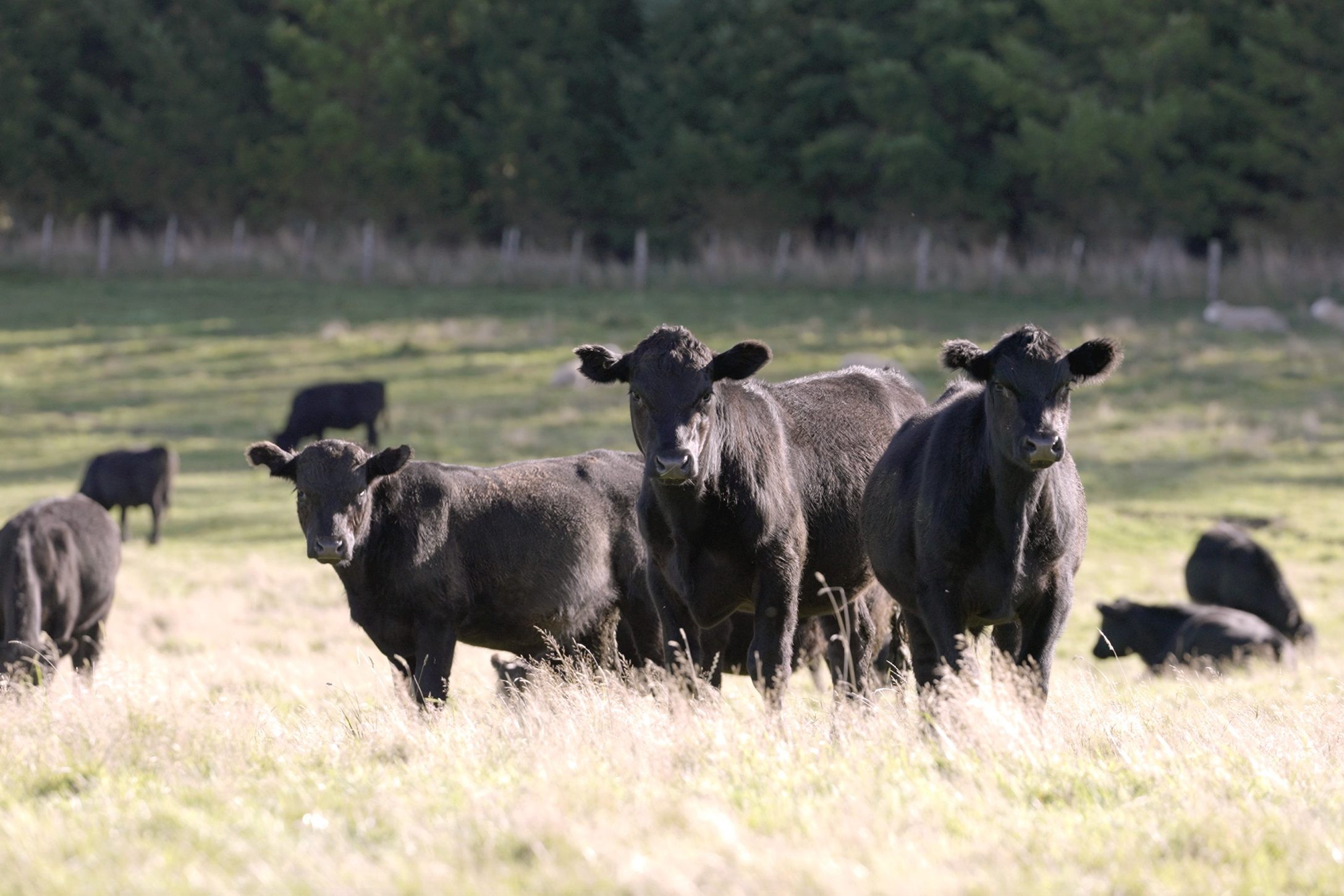Cow condition score is regarded as a big influencer of conception rate
Body Condition Score (BCS) data over several years shows a straight-line relationship to mating success. Words by Tony Leggett.

Thousands of measurements taken at regular intervals from animals in the Informing NZ Beef (INZB) progeny test are providing geneticists with a treasure trove of data for further analysis.
Cow hip height, body condition score, cow docility and mature cow weights are among a host of maternal trait measurements being recorded from 1100 females mated across two test sites, at Kepler Station near Te Anau and Lochinver Station east of Taupo.
Beef + Lamb New Zealand Genetics Geneticist Franzi Weik is using the data to investigate the potential for new estimated breeding values (EBVs) for commercial beef farmers to incorporate into their selections at bull sale time.
One potential EBV under development is for cow condition score, regarded as a big influencer of conception rate in any herd. Weik says BCS data collected over several years shows a straight-line relationship to mating success when using artificial insemination.
Heifers produced as part of the progeny test are mated naturally for two matings, then via artificial insemination in following years. For every increase of one BCS, mating success from a single insemination rises 5%.
The results highlight the value of condition scoring cows and preferentially feeding low BCS cows to improve the overall pregnancy rate. Weik advises farmers to aim for BCS of 7 or more.
In her earlier work, Weik discovered that fat level measurements collected as each cow’s progeny are being finished for slaughter are a poor predictor of a dam’s BCS. “BCS is also connected to muscle, so we also looked at eye muscle area but found the same story. It explains part of the picture but doesn’t explain all the variation, so it’s not really a great tool for predicting the BCS trait.”
So, she decided to look at cow BCS directly rather than using fat or muscle in the progeny as a proxy for it. “This is what we’re currently working on: developing a BCS EBV so it can be used as a bull selection tool by commercial herd owners.
“I want to highlight here that if we select for higher BCS, we’re not going to increase fertility directly. It’s essentially more of an EBV for ease of management so you can use it as a tool to produce cows that are easier to manage to get them to target BCS at mating time,” she says.
The reason for collecting hip height data is to assess its relationship to cow size. One possible outcome of the analysis could be to create an index of EBVs for cow size which comprises cow BCS, mature cow weight and hip height which would enable farmers to influence mature cow size from their bull selections.
Geneticist Dr. Jason Archer, who heads the IBNZ programme, says the development of a new EBV for BCS is a good example of why the progeny test was set up. “A lot of people think that the goal of any progeny test is a drag race between bulls, and to some extent that is right. It will provide data to assess some leading industry bulls, but there is also within breed data that comes out of this that is also very important too.”
We are continuing to collect maternal performance data under conditions where cows are challenged commercially.
One big difference between this progeny test and a typical stud bull breeding business is that a large number of steers and heifers are slaughtered, generating valuable carcase data. “The second thing is we are continuing to collect maternal performance data under conditions where cows are challenged commercially.”
Archer says demonstrating the power of cross breeding is another goal from the overall INZB progeny test which will compare performance of Hereford, Angus, Hereford-Angus-cross (both ways) and Simmental-Angus-cross heifers and steers.
Hereford and Angus bulls are used across both sites, while Simmental are also included at Lochinver. “In my view, cross-breeding has been under-used by the NZ commercial beef production industry. This will also give us the chance to investigate and roll out some new traits which will help farmers select better bulls for their beef production strategy.”
Cross-breeding delivers more advantage from the growth traits which are moderate to highly heritable. “Crossbreeding itself doesn’t tend to do a lot for carcase traits because they are highly heritable,” continues Archer. “But introducing the second breed in terms of growth, and a more carcase-orientated breed (like the Simmental), that breed difference can do quite a bit for the carcase traits too.”
Reproduction and maternal traits are hard to improve from a purebred breeding perspective, but Archer says that’s where you get ‘real bang for your buck’ in a cross-breeding situation, provided a farmer is prepared to manage the complexities of maintaining a crossbred cow herd.
Another new development for the progeny test is the trialing of cow tag technology currently being increasingly used in the dairy sector. The tags gather real time data from the cows’ eating and movement, enabling the researchers to pinpoint when animals come on heat and when they cycle again following having their calf.
To watch the body condition scoring video visit beeflambnz.com.




